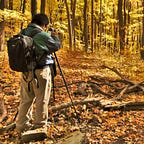Fake it until you make it…
That mentality of “fake it until you make it” is actually the extremely version of what technology and engineering at the edge is about. Perhaps the word “fake” is not quite right here, but technology and engineering at the edge, the bleeding edge, is really about trying the guesses and hunches that come to mind to solve a particular problem.
The reason why the word “fake” is not quite right is that there is no hype here, when you are trying out guesses and hunches. But, that actually is the spirit, minus the hype. In other words, do exactly the same as “fake it until you make it”, but minus the hype until you have actually made it.
I do understand why faking it is important, as that is how you raise money. No money, no business, even if your guesses and hunches are good, it does not matter. Hence the need to hype it up, and hope that the reality, once the thing has made it, actually matches the hype. It seldom is, but getting close is good enough for the investors, who also know the drill as well.
But exactly what is it? Well, contrary to the popular imagination and understanding, technology is not the same as science. Science is about explaining how things are, how things work. Technology is about getting something to work in a particular way, even if the reason why it works is not known. Engineering is the journey of getting something to work. So, it is also a little bit different from technology. But it is not science. Engineering is not about science, although it might use science to its advantage.
The Chinese could calculate solar eclipses for a few thousand years. That does not mean they knew why it happened. They did not have the science of astronomy for thousands of years.
They engineered a vehicle that always pointed south thousands of years ago as well. That does not mean they knew mechanical engineering principles. They just knew how to construct a vehicle with gears so that however you move the vehicle, how you turn the wheels, the vehicle has a thing that will point to the South. By the way, that is the reason why when I was a kid, compass was still referred to as 指南针(South pointing needle).
When I was reading Alexander’s “The Timeless Way of Building” multiple times, years ago, I was also reading “The Tower and the Bridge” by David P. Billington. It is a fascinating read, about how structural engineers were calculating weight bearing properties of materials that they did not know very much about. The “tower” in the title is the Eiffel Tower, and the “bridge” is the Brooklyn Bridge. At about the same period, the Swiss structural engineer Robert Maillart was building his reinforced concrete bridges in Switzerland when that material was still a novel material to work with.
These are all engineering efforts before science. Of course, the technology of reinforced concrete and even steel was quite new and their properties were not quite understood by science. So, the progression seems to be technology to engineering to science.
Now, with AutoCAD, you can build bridges with reinforced concrete as the properties are largely known. Still, a long bridge over water is a challenge, as every location is different. And it is always a one off, unlike highway bridges where the spans are short.
What does this have anything to do with software? Well, we also have the same phenomenon of technology to engineering to science. Similar to structural engineering, the most challenging stuff is the one-off stuff. Unlike structures, software can usually be debugged after it has been in production.
Hence it is possible to fake it. You can’t fake a bridge with long spans over a river or some body of water. Or people might die. Examples are all over the place through history. Like the Quebec bridge disaster. Like the Tacoma Narrows bridge.
So, Maillart tested his reinforced concrete slabs before he used them to build a warehouse. How do you test a one-off thing like a single-use rocket? Worse, where the testing itself might damage the thing being tested, like what happened to Apollo 13.
